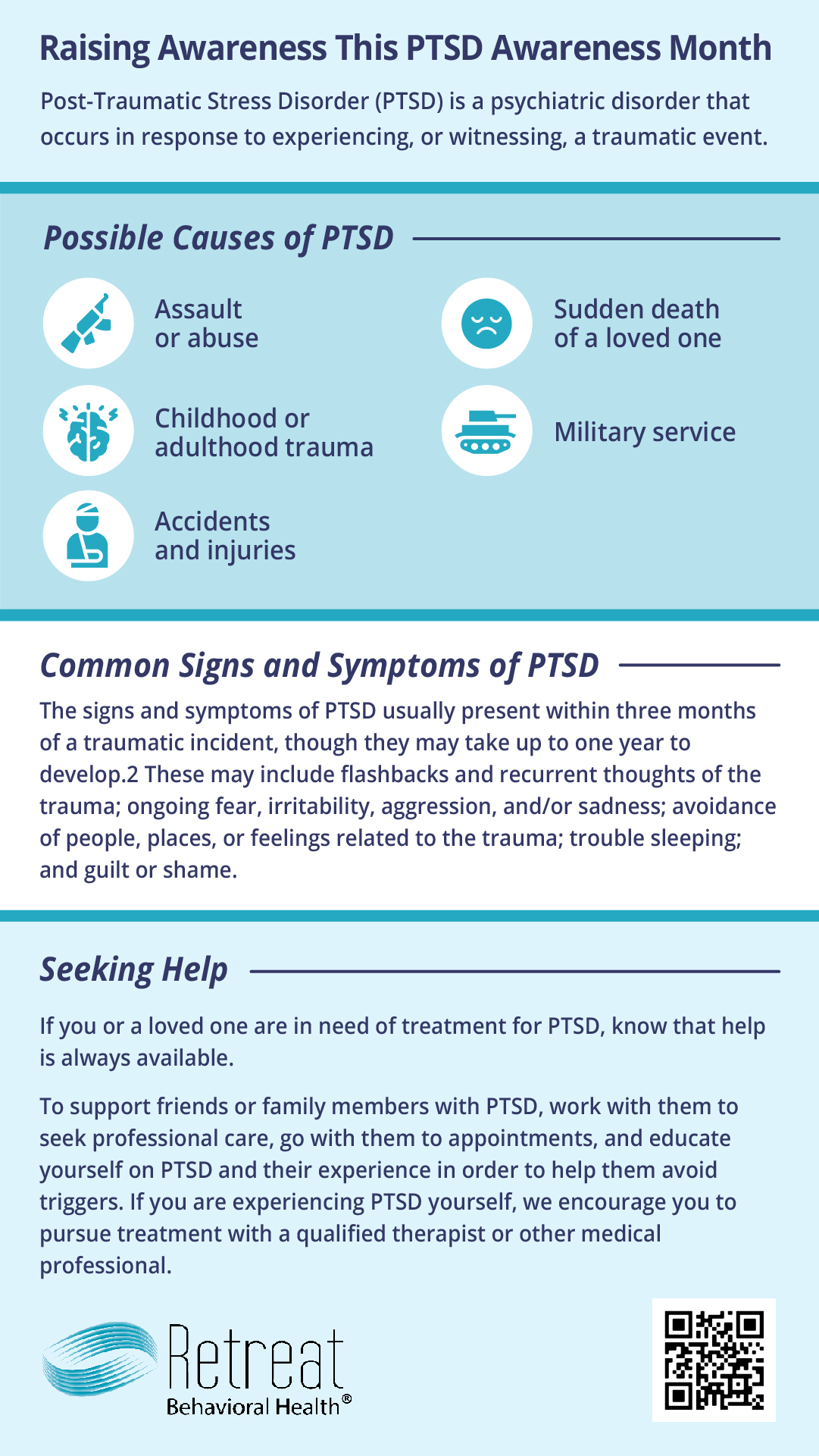June is PTSD Awareness Month: Here’s What You Should Know

It’s PTSD Awareness Month, which means that there’s no better time to set the record straight on PTSD—including who it can affect and how it can develop.
PTSD Awareness Month is held every year in June, with PTSD Awareness Day falling at the end of the month on June 27. The month is dedicated to widespread education on the topic of Post-Traumatic Stress Disorder, a mental health condition that we often associate with military veterans but can also affect a wide variety of people, for many different reasons.
So why is PTSD awareness important? Well, the more we talk about mental health conditions the more we can help remove the stigma and the many misconceptions that surround them. This can encourage those who are suffering from PTSD to reach out for help if they need it, and can also teach everyone else how to identify possible symptoms and what we can do to help the individuals affected.
Whether you or a loved one suffers from PTSD, or if you’re just interested in learning more, we encourage you to take some time this PTSD Awareness Month to learn a bit about PTSD and how it affects people. We’ll be sharing some statistics below, as well as ways that you can further your understanding of this mental health condition in June, and beyond.
5 Quick Facts About Post-Traumatic Stress Disorder (PTSD)
Contrary to what many people think, PTSD is not exclusive to veterans—or even those who have suffered extreme trauma. Likewise, experiencing trauma does not mean that someone will develop PTSD.
PTSD can develop in many people for many different reasons. And with that in mind, here are some interesting facts and figures that show what PTSD looks like by the numbers:
- Of the entire U.S. population, about 7% to 8% will experience PTSD at some point in their lives.
- PTSD is more common in women than men.
- Childhood trauma can result in adult PTSD.
- Of those with PTSD, about a third will experience a severe form, a third will experience a modern form, and a third will experience a mild form.
There are many potential causes of PTSD, including serious accidents, abuse or assault, health problems, and even tangential exposure to a traumatic event, such as knowing someone who went through trauma. Veterans are at high risk, as are first responders like EMTs and firefighters.
Do I Have PTSD?
Because PTSD can happen to various people and for various reasons, it’s helpful to be aware of how it presents so that you can be more likely to recognize it when it occurs.
Some signs and symptoms of PTSD include:
- Flashbacks
- Severe emotional distress
- Lack of interest in previously enjoyed activities
- Mood swings
- Intense sadness, anger, guilt, and/or shame
- Emotional numbness
- Self-destructive behaviors and impulsivity
- Overwhelming fear/and or aggression
- Trouble sleeping
- Social isolation
Important to note is that even people who have gone through similar types of trauma may not experience PTSD in the same way. Signs and symptoms may also present differently depending on age and gender.
Popular Treatments for People with PTSD
People with PTSD often feel hopeless, but over the years we have identified a number of treatment modalities that have proven incredibly helpful.
Cognitive behavioral therapy (CBT)
A form of psychotherapy focused on addressing negative thoughts and reframing them in more positive ways.
Prolonged exposure therapy (PE)
Talking directly about traumatic situations and resulting feelings as a means of demystifying and moving past them.
Eye Movement Desensitization and Reprocessing (EMDR)
The use of eye movements and sounds to change the way that the brain processes traumatic events or responses.
There are also some alternative therapies that are gaining steam, including ketamine therapy.
Different people may have success with different therapies, so it’s important to work with a mental health provider on figuring out what type of treatment is most effective and what supplemental treatments—such as antidepressants, antipsychotics, or anti-anxiety drugs—can also help.
Raising Awareness About PTSD
A huge priority during PTSD Awareness Month is for everyone to do their part to raise awareness and educate themselves.
If you’d like to get involved, we’d recommend checking out the PTSD Awareness calendar, which features a different way to participate for each day of the month of June. And if you know someone who is experiencing PTSD, read up on specific ways that you can lend your support.
The more that we understand about PTSD and other mental health conditions, the more that we all benefit. And at Retreat Synergy, we’re committed to doing our part, including offering therapeutic programs and services for individuals with PTSD and their families. Learn more about us, and schedule an appointment if you are in need of help.
